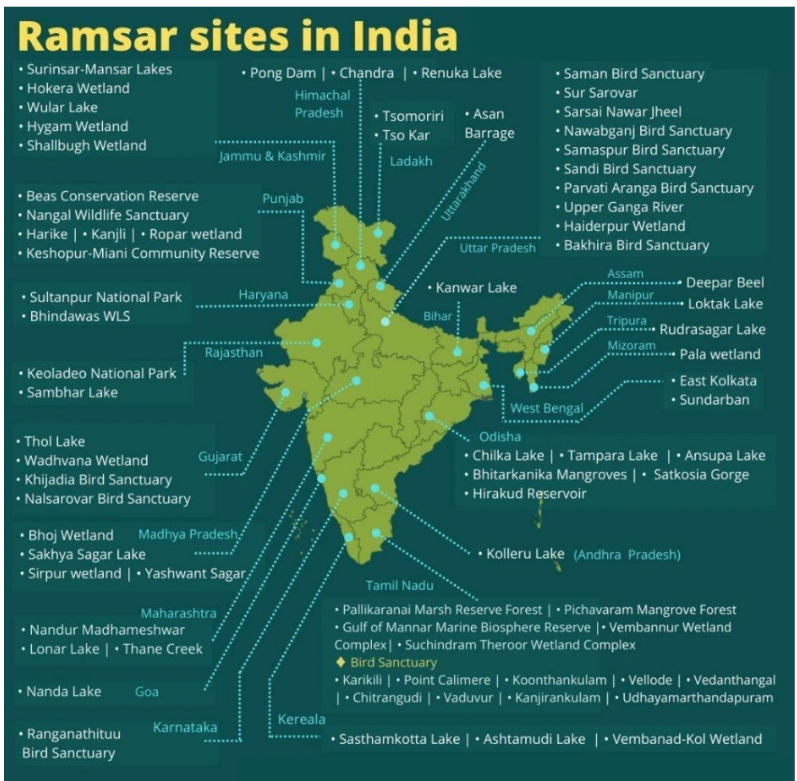World Wetlands Day 2025 will be celebrated on February 2, 2025, to spread awareness about crucial role wetlands in preserving biodiversity, supporting livelihoods, and combating climate change.

World Wetlands Day is celebrated annually on February 2 to raise awareness about the importance of wetlands and promote conservation efforts globally. This day marks the adoption of the Ramsar Convention on Wetlands in 1971, an international treaty focused on the protection and sustainable use of wetlands. Wetlands play a crucial role in maintaining ecological balance, supporting biodiversity, and mitigating climate change.
Each year, World Wetlands Day has a specific theme that focuses on a critical issue related to wetlands. The theme for World Wetlands Day 2025 is “Protecting Wetlands for Our Common Future.” It highlights the need for conservation efforts to safeguard ecosystems for future generations.

Wetlands are among the most productive ecosystems on Earth, providing habitat for diverse plant and animal species. They contribute to:
Despite their importance, wetlands are disappearing three times faster than forests due to urbanization, industrial pollution, and climate change. World Wetlands Day aims to promote policies and actions that protect these vital ecosystems.
The Ramsar Convention is an international treaty signed on February 2, 1971, in Ramsar, Iran, to promote the conservation and sustainable use of wetlands worldwide. Over 170 countries are signatories to this treaty, pledging to:
As of 2025, there are over 2,500 Ramsar sites globally, covering more than 250 million hectares of wetlands.
India is home to 85 Ramsar sites, making it the highest number in South Asia in wetland conservation. It covers around 1.35 million hectares of dedicated land for a Sustainable Ecosystem. Some notable Ramsar sites include:
| Important Wetlands in India & Ramsar Sites | ||
|---|---|---|
| Wetland Name | Location | Significance |
| Sundarbans Wetland | West Bengal | Largest mangrove forest, home to the Bengal Tiger |
| Chilika Lake | Odisha | Asia’s largest brackish water lagoon, critical for migratory birds |
| Keoladeo National Park | Rajasthan | UNESCO World Heritage Site, rich in avian biodiversity |
| Loktak Lake | Manipur | Floating national park with unique ‘phumdis’ |
| Wular Lake | Jammu & Kashmir | One of the largest freshwater lakes in Asia |
India’s wetlands support 40% of biodiversity and are vital for water security, flood control, and rural livelihoods.

India’s wetlands are categorized based on their geographical location and ecological characteristics. These wetlands play a crucial role in biodiversity conservation, water storage, and climate regulation. The table below outlines the eight major categories of wetlands in India:
| Category | Location |
| Reservoirs of the Deccan Plateau and wetlands along the southwest coast | Deccan Plateau, Kerala, Karnataka, Maharashtra |
| Saline wetlands | Rajasthan, Gujarat, Gulf of Kutch |
| Freshwater lakes and reservoirs | Gujarat, Madhya Pradesh |
| Delta wetlands and lagoons | East Coast (Odisha, Andhra Pradesh, West Bengal) |
| Freshwater marshes in the Gangetic Plains and Brahmaputra floodplains | Uttar Pradesh, Bihar, West Bengal, Assam |
| Marshes and swamps in northeast India and the Himalayan foothills | Northeast states, Himalayan foothills |
| Lakes and rivers in Kashmir and Ladakh | Jammu & Kashmir, Ladakh |
| Mangroves and wetlands in the Andaman and Nicobar Islands | Andaman & Nicobar Islands |
To strengthen wetland protection, the Wetland (Conservation and Management) Rules, 2017 were introduced in India. Key provisions include:
Despite these rules, challenges such as pollution, illegal encroachments, and climate change continue to threaten wetlands. Stronger enforcement and community-driven conservation programs are needed.
Ready to boost your UPSC 2025 preparation? Join PW’s UPSC online courses today!
World Wetlands Day is celebrated every February 2 to raise awareness about wetland conservation and promote sustainable practices.
The theme for 2025 is "Wetlands and Resilience: Adapting to Climate Change," emphasizing the role of wetlands in climate adaptation and biodiversity protection.
The Ramsar Convention is an international treaty signed in 1971 to protect and sustainably manage wetlands of global significance.
As of August 2024, there are 85 Ramsar sites in India, the highest number in South Asia.
Major threats include urban encroachment, pollution, deforestation, climate change, and unsustainable agriculture.

<div class="new-fform">
</div>